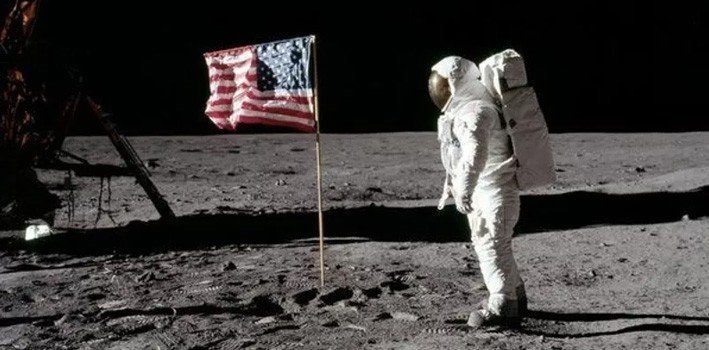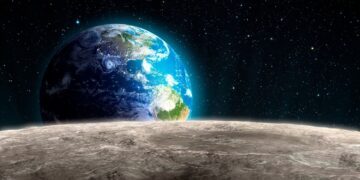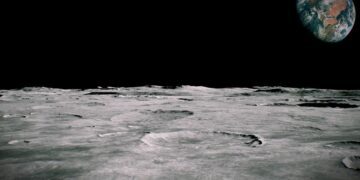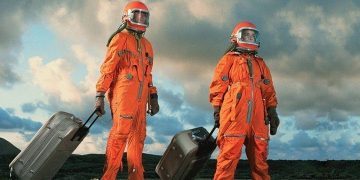Whenever man achieves the next unbelievable feat there are those who actively try to refute that it actually happened.
These conspiracy theorists, however crazy, always look for some minuscule or otherwise ridiculous reasoning behind the outstanding achievement to validate their claim.
Man, or more specifically the US, first stepped foot on the surface of the Moon during the Apollo 11 mission.
This happened on July 20, 1969; the world was in awe at these heroes, finally signaling that the unreachable was a reality.
This event was no exception to the conspiracy rule though.
Here we’re going to look at 5 common myths that conspiracy theorists use to deny that the Moon landing actually occurred.
The astronauts’ footprints are too clear.
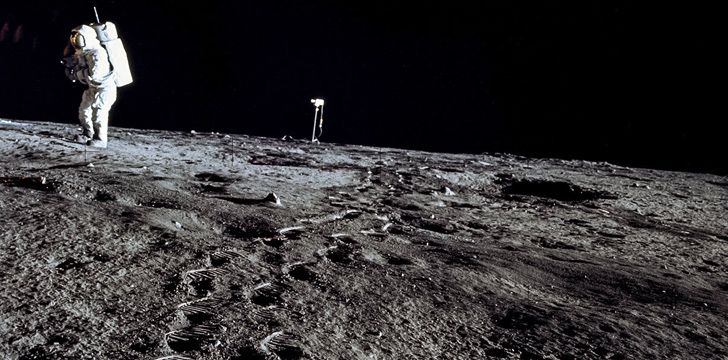
One of the main theories disputing the success of the Moon landing would be that the astronauts’ famous prints on the Moon are too clear for them to be made on a completely dry world.
For the prints to be that defined they would have to have been made in a substance like wet sand but this is complete nonsense.
Moondust, or regolith as it’s known, is a finely ground powder similar in appearance to volcanic ash.
When a foot, or any object, is pressed into this substance it compresses very easily into the shape of the object, for example, a boot.
As a result of the Moon’s airless vacuum, the shapes created could stay pristine for a long time.
The shadows are pointing in different directions.
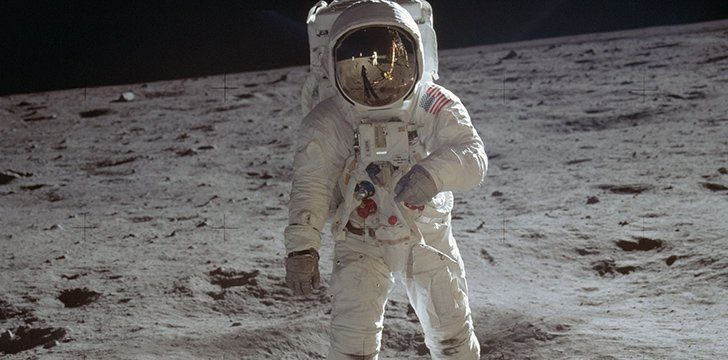
Another major area of dispute is that there appear to be multiple light sources on the photographs causing shadows to shoot off in different directions.
But how is this possible when the Sun is the only thing surely capable of producing enough light on the Moon?
They credit the cause of the other light sources to possible studio lighting.
Roger Launius, a space historian, explains the actual reason behind the apparent multiple sources:
“You’ve got the sun, the Earth’s reflected light, light reflecting off the lunar module, the spacesuits and the lunar surface.” and these all cause light manipulation.
The main reason though is, as we all know, the Moon’s surface is anything but flat, and if something is sat in a dip or raised upon a hill.
Of course, a different shadow is going to be produced when compared to something beside it that’s on a flat, higher, or lower surface.
There’s no impact crater.
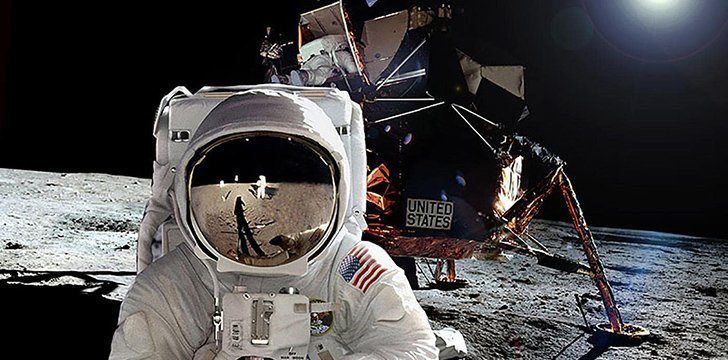
“But the craft had no impact crater below it” they shout!
True, the photographs of the Moon lander do indeed show that the craft has no visible impact crater below it, but there is a reason for this.
The engines of the Moon lander were throttled back prior to landing, and it just didn’t hover long enough to form a crater or kick up that much dust, that’s all it is.
Launius, once again holding the flag of reason, said, “Science fiction movies depict this big jet of fire coming out as a spacecraft land, but that’s not how they did it on the Moon”.
NASA backs up this theory, saying that the lander would have needed much less thrust in the low-gravity than if it was on Earth.
Also, the Moon’s surface is a solid rock covered with the previously mentioned substance known as regolith, so a crater actually being formed, digging away at the ground, would require a huge amount of force.
It’s just like how an airplane doesn’t leave a huge crater on a concrete airstrip when it touches down.
Where are all the stars in the photographs?
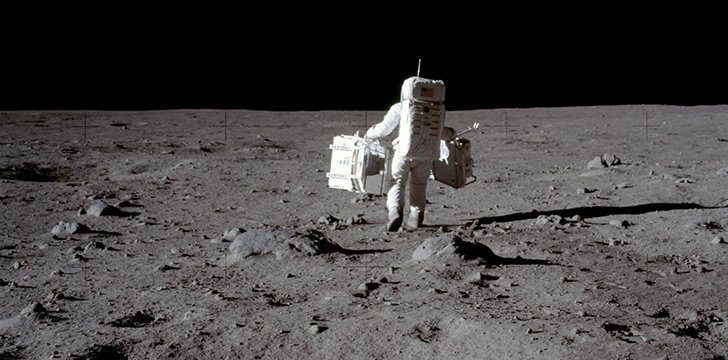
Conspiracy theorists point to the fact, that understandably there are no stars in the photographs taken from the Moon.
NASA you silly people, you forgot to turn on the satin-covered light wall how dare you!
The real reason is much simpler.
It’s difficult to capture something very bright and something very dim on the same bit of film – typical emulsions don’t have enough “dynamic range.”
Astronauts wandering across the bright lunar soil in their sunlit spacesuits were quite literally dazzling.
Setting a camera with the proper exposure for these conditions would naturally render background stars too faint to see because you know the spacesuits wandering across the Moon is kind of the main focus not so much the twinkly lights behind them.
Most photographers can attest to this issue.
The flag is flapping in the wind.
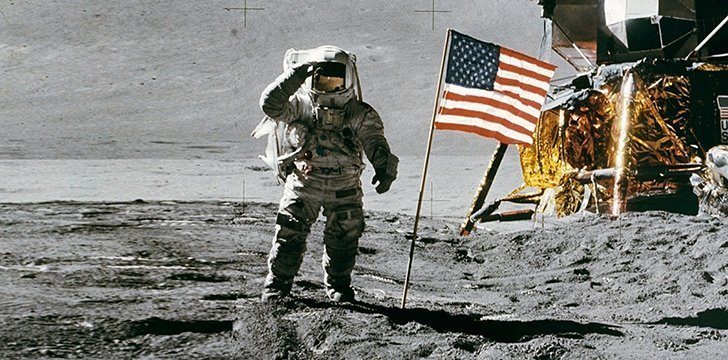
One of the main claims made by those who disbelieve the Apollo 11 landing is that the American flag was seen ‘flapping’ on the surface of the Moon.
Indeed it shouldn’t be, as there isn’t any wind on the Moon!?
No, they’re right, of course, there isn’t any air on the Moon or very little gravity, but there are momentum and inertia.
The flag was made of nylon, for a more rigid and stable design.
It was placed on a telescopic flag pole with a side pole protruding frontward.
The flag was slid onto via a hem sewn into the flag itself, to give it the illusion it was square and flying.
The fabric of the flag was moved around while being set in position.
When the astronauts were planting the flagpole they turned it back and forth to dig into the lunar soil so of course, the flag waved!
Unfurling any rolled cloth with stored angular momentum will result in waves, ripples, and movement, and without a breeze, it won’t stop instantly.
When Neil Armstrong uttered those famous words, “Houston, Tranquility Base here. The Eagle has landed.” To NASA’s Mission Control base, it symbolized a new era, man had officially made it to another location in space!
Capsule Commander Charles Duke summarized the sheer effort and anticipation those involved felt, after receiving the message he said:
“Roger, Twank…Tranquility, we copy you on the ground. You got a bunch of guys about to turn blue here. We’re breathing again. Thanks a lot!”
Now don’t get me wrong, everyone is of course entitled to their own opinion, whether it’s the existence of aliens in Area-51 or the fact this mind-blowing achievement of man was nothing more than a hoax.
I understand but please do your research, use reputable sources!
